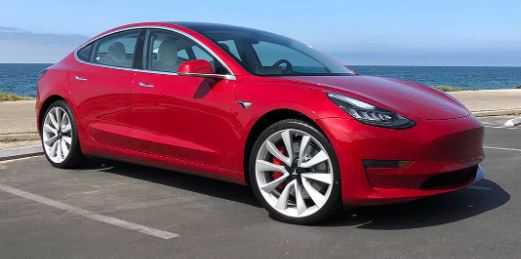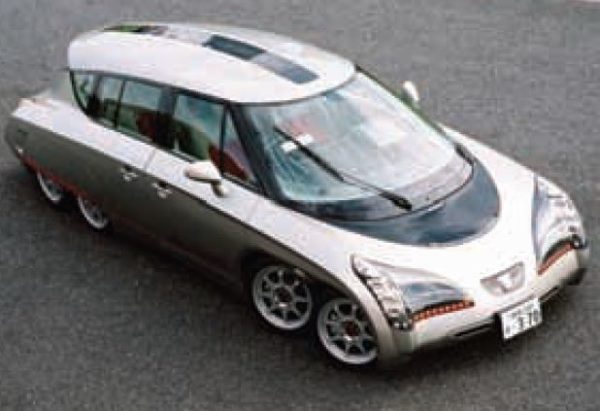How to Cut CO2 Emissions by 95% in Japan by electric cars
CONTENTS
By Hiroshi Shimizu, professor of Keio University
The 20th century, for the people of the nations that use a great deal of electricity, was a world of extreme comfort and convenience. But the end result has been the people of the 21st century facing grave environmental issues. The global warming crisis will not wait. The time is now for the world to muster its collective experience and wisdom to find a solution. Everyone seems to agree on the basic issues, however, when it comes to specific policy there is hardly any agreement on how to proceed even among the advanced nations, much less between the advanced and the developing nations. The world is supposed to have entered the age of “eco” as opposed to “ego.”
Any way you look at it, a technology-based approach will be key to overcoming this crisis faced on a global scale. What are the dominant technologies that form the core of this approach?
Let me begin with my conclusion, and that is, if we are able to adopt across the board the four dominant technologies that I advocate here, we should be able to cut CO2 emissions by 95%. Now, let’s take a look at each one of those technologies.
The Greater Than Expected Potential of Solar Cells
The 1st dominant technology is solar cells. When we think about energy in the coming age, electricity will surely take the leading role in terms of a resource that can be utilized in a variety of applications and be efficient and easy to use at the same time. Solar cells are seen as the optimal means for securing that electricity. To explain it very simply, when light hits an object with two different types of semiconducting materials, it is transformed into electricity. The solar cell is what resulted from the application of this basic scientific principle. The solar cell was born in America and grew up in Japan. Even today, Japan has the greatest technological advantage.
Power supply capacity of solar cells is probably much larger than the reader imagines. For example, a 115-square-meter house can supply the household with one year’s worth of electricity simply by affixing solar panels to the entire roof surface. On a global scale, that means if just 1.5% of the earth’s landmass surface was installed with solar cells, it would be enough to supply energy for roughly 6.6 billion people, even if they used extravagant amounts of electricity like today’s Americans. However, covering even just 1.5% of the earth’s landmass would be the equivalent of about one-fourth of the surface of the United States, not an easy thing by any means. But with advancing development of water surface solar cells, there are plenty of possibilities. Solar panels can be installed in desert regions. The way lies open for dreaming on a grand scale.
The weak point of solar cells has been said to be insufficient quantities of raw material silicon. But this is not necessarily correct. Silicon is part of the composition of soil, and thus can be found anywhere on earth, and in fact in principle is an unrestricted resource. When it is said that there won’t be enough silicon, what is meant is that the capacity of chemical manufacturers to refine high purity silicon will not be able to keep up with demand. High purity silicon has been manufactured for use as a material in transistors and integrated circuits. That market has been rocked by periodic fluctuation in supply and demand conditions. Materials makers as a means to hedge the inherent risk of that market have produced silicon of a lesser purity for the solar cell market. If it becomes a matter of national policy to encourage widespread and high volume use of solar cells, obviously those materials makers will feel confident about investing in increased capacity.
There are also technologies under development that would drastically reduce the amount of silicon used in solar cells. Currently silicon is produced in bulk shapes, known as crystalline silicon, which are then sliced into wafers. New thin film technology would place a thin film over the supporting substrate before building the solar cell. Though some efficiency is lost as the technology stands at this point, that will certainly be recovered as the technology develops. Which of the solar cell technologies will become the mainstream will depend on future work, but either way there is no reason to believe that the silicon supply will become fatally low.
Global Warming Is Our Opportunity
For any technology, the road from discovery or invention to industrialization and market permeation is a bumpy one. Although solar cells have gotten to be fairly low in price, they are still not cheap enough to achieve wide usage on their own without subsidies. With current solar cells, it is estimated that it costs 500,000 yen to produce 1kW of power. In Tokyo, what you can generate in one year with around 1kW electrical capacitance is 1,000 kWh. Based on these figures, it would take 20 years to recover the cost. If you include interest, you would still be in the red after 20 years. Of course solar cells have a useful lifespan of about 30 years, so you would end up in the black, but the high cost of initial investment means the sad fact is that only a fairly wealthy population is able to consider installing solar power.
On the other hand, in industrial goods the rule of thumb is that a tenfold increase in capacity will lower the price by half. This is because of what is called the learning curve, wherein the more product you make, your manufacturing method becomes faster, more productive methods are developed, and technology is further advanced. As long as people don’t stop asking for lower prices, or materials don’t run out, the price of solar cells should also come down in line with this manufacturing learning curve. In fact, as shown in Chart 1, in the twelve years from 1992 to 2004 the price fell to one-fifth of what it was, while the cumulative capacity was increased by a factor of 150. If manufactured volume increases by a factor of 100 from what it is now, even if we estimate product lifespan at only 20 years, we will be able to make electricity at 6 yen per kWh. What the utility companies publish as their cost price for electricity generated is generally 6-10 yen, so this would be in line with generally acceptable prices.
The speed with which new technologies and industries permeate societies is truly drastic these days. In advanced nations new technologies replace the old ones completely within about seven years. Look at cell phones, digital cameras, CDs, or quartz watches. If consumers decide it is the right time to buy, solar cells too will most likely spread like wildfire within the next seven years.
Following that logic, current sales by Japanese makers are around 100 billion yen, but the scale of the global solar cell market will grow to the trillions of yen practically overnight, and it is estimated that it might reach a maximum of 200 trillion yen. The companies that can keep up with that pace of exponential growth will be the ones that survive. Or, the nations that can keep up with that pace will be the ones that survive. If China or India can get the nation behind them and focus their most talented engineers and technological prowess on solar energy, they may surpass Japan in the speed of permeation. If so Japan will have no part to play. Even if Japan maintains its current 50% share of the world market, it is no time to rest on our laurels. Unfortunately, our policy-making leaders lack the vision to assert positively that solar cells are the dominant technology that will lead the world going forward.
According to my calculations, as shown in Chart 1, to fulfill all of Japan’s energy needs with electricity would require the generation of no more than 2.7 trillion kWh. Currently we are using 1 trillion kWh. If we change all the household hot water heaters and heating systems that run on thermal energy now to electric, and if we change all the cars to electric cars, and we convert all iron-making to hydrogen furnaces, the total would be 2.7 trillion kWh. According to government sponsored surveys, it is possible to generate 8 trillion kWh a year by installing solar cells on the roofs of the homes and buildings in Japan as well as on unused farmland. We wouldn’t have to rely on foreign energy resources anymore. And, if Japan becomes the largest producer of solar cells, Japan will become an exporter of resources. That is what I mean by global warming is our opportunity.
Japan’s Lithium Ion Battery

Because the weak point of solar cells is that they do not generate power at night or on rainy days, or on days with weak sunlight, in order to ensure a steady supply of power, we need technology to store power. What is viewed as the 2nd dominant technology in this sense is the lithium ion battery. This battery excels in energy and power density as well as lifespan, and there is nothing to worry about in terms of material supply either. Regarding the risk of batteries overheating or combusting, if manganese anodes are used instead of cobalt or nickel as is current, a much higher safety level can be ensured.
After the oil shock of the 70s research into new battery technology began all over the world, and the lithium ion battery was invented and commercialized in Japan. 1 billion small lithium ion batteries of the kind used in cell phones and other devices are manufactured every year. Large scale lithium batteries were born in 2000. If these batteries are used to store large volumes of electricity, we can use power with confidence at night and on rainy days. These can also be used to power electric cars.
However, lithium batteries are still expensive. China, Korea and Taiwan are catching up to Japan rapidly in the manufacture of small lithium batteries, and Japan’s ability to maintain market share is at risk. As of one year ago, China already had 30% of the market, and there is no telling when that will grow to 50% or even 70%. If China conquers the market in large scale lithium batteries, Japan will have no seat at the banquet. We must recognize right now that the lithium battery is an important dominant technology for Japan, and get the entire country behind its support.
The Most Efficient Electric Car

Today’s world average for CO2 emissions is 4 ton per capita. In order to cut this by half to 2 tons, Japan would have to cut her current 10 tons per capita to 1/5th, and America would have to cut her current 20 tons to 1/10th current levels. Using solar cells to convert thermal energy to electricity would result in a 65% reduction, but it will be impossible to achieve our goal without reducing automobile CO2 emissions.
But there are limits as to how much an engine-based car can be improved. In hybrid cars with a motor assist function attached to the car engine, fuel costs are improved but that is not enough. It is not a matter of compromising with bioethanol or biodiesel. If we planted palm trees on every continent on earth and used those for energy, it would be nowhere near enough.
So as a technology for drastically reducing CO2 emissions, the only choice is the fuel cell car which uses power from fuel cells to turn the motor, or the electric car which uses electricity stored in batteries. At this point in time, fuel cell efficiency is still not good. Efficiency is 70% under the method that reforms natural gas to take out hydrogen, and 70% using electricity generated by solar cells to electrolyze water and make hydrogen. Fuel cells themselves are only about 50% efficient, so overall efficiency is no more than 35%. On the other hand, the most efficient generator in Japan has a 53% efficiency, so even calculating a 5% electric supply loss we can assume a 50% efficiency rate. Accordingly, this means that it is most efficient to run a motor off generated electricity that has been store in an lithium ion battery. Also, supply of resources needed for materials such as silver is limited in fuel cells, while electric cars have no such concern. And so the 3rd dominant technology becomes the electric car.
However, from the point of view of the user, a car comes down to the feel of acceleration, size and comfortability. Electric cars till now have performed extremely poorly in all three points of customer satisfaction. The electric cars slated for release around 2010 have not yet been able to conquer those concerns. The reason for that is manufacturers have not been able to get past the concept of merely remodeling traditional engine-powered cars. The electric car prototype that I made puts the motor in the wheels and the batteries and other systems all inside the below floor frame so that everything from floor to roof is passenger space. The tires I made smaller. If it’s just four small tires the ride is not as comfortable and the load becomes heavy, so I used eight small tires, so that the tires would not interfere with the design of the chassis.
The “Eliica” electric car design (Chart 2) that incorporates these new concepts can accelerate in excess of a Porsche 911 (Chart 3), and also manages to offer similar roominess and riding comfortability as a regular sedan. It has a low center of gravity because the battery and other systems are below the floor, making it very hard to overturn even on sharp curves so the design has benefits in terms of safety as well.
In order to bring the Eliica to the commercial market, we have to prove the reliability, safety and durability of the car, and that costs more than the production of the prototype. Obviously in small lot production there is no way it can compete in terms of price. It will probably not approach the price of gasoline powered cars until we are past 100,000 units. The problem is the resistance that industry tends to have towards groundbreaking technology that will eventually completely change accumulated existing technologies. This is the dilemma of innovation, that even if they know they will make money in the long run, it is hard for businesses to jump in to a new technology that is totally different from what they are doing now. In order to change these attitudes we probably need the leadership of the national government.
Iron Making with Hydrogen Fuel

10% of CO2 emissions by Japan’s industry is from iron-making. The definitive method for reducing this is to use hydrogen instead of ordinary fuel like coal. Using hydrogen as fuel eliminates CO2 as a byproduct and instead produces water. Using electricity from solar cells to electrolyze water, and then using the hydrogen from that process as fuel to make iron would make it possible in theory to have an iron making method that does not emit any CO2 at all. This is the 4th dominant technology, hydrogen iron furnaces.
Ways of making iron using hydrogen were studied at length during the 80s. What caused that research to be abandoned at the time was the high cost of using hydrogen. But if solar cells can be used to make hydrogen cheaply, that technology comes back to life. But research cannot advance based on the efforts of current small scale research facilities at iron makers or universities. If the public budget provides for recognition of this iron making method as a core technology for Japan, it has the potential to become an epoch-making technology.
If the four main technologies that I propose herein are 100% realized, we can reduce overall CO2 emissions by 95%, including a reduction of 65% in electricity generation and thermal energy, 20% in cars, and 10% in iron-making. None of these are particularly difficult technologies. All we have to do is use well-understood technologies in a skillful fashion. It is a very realistic possibility, and so I think we need to arouse public opinion and get commitment to these technologies realized as public policy. In doing so I am sure we be able to resolve the problem of global warming.


